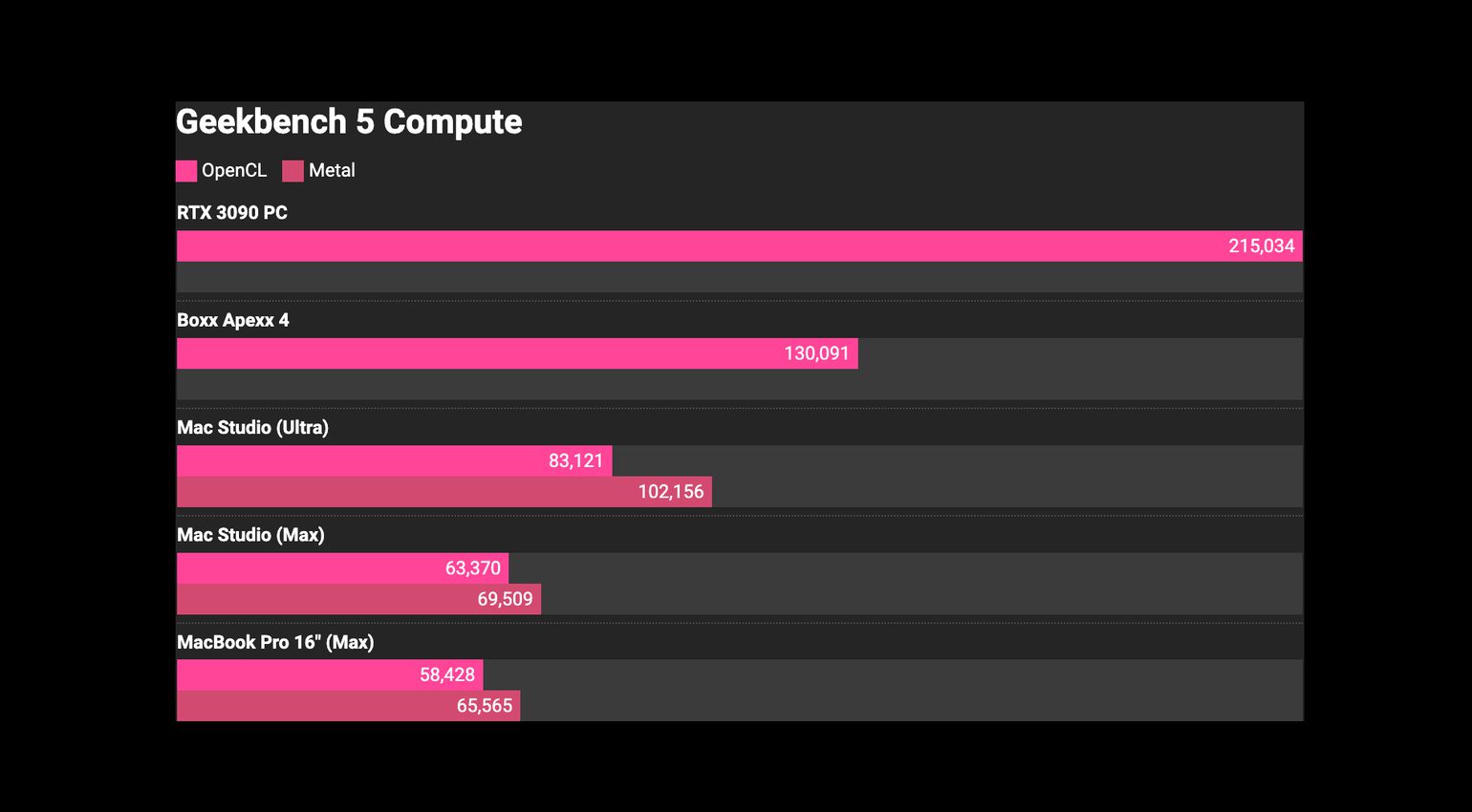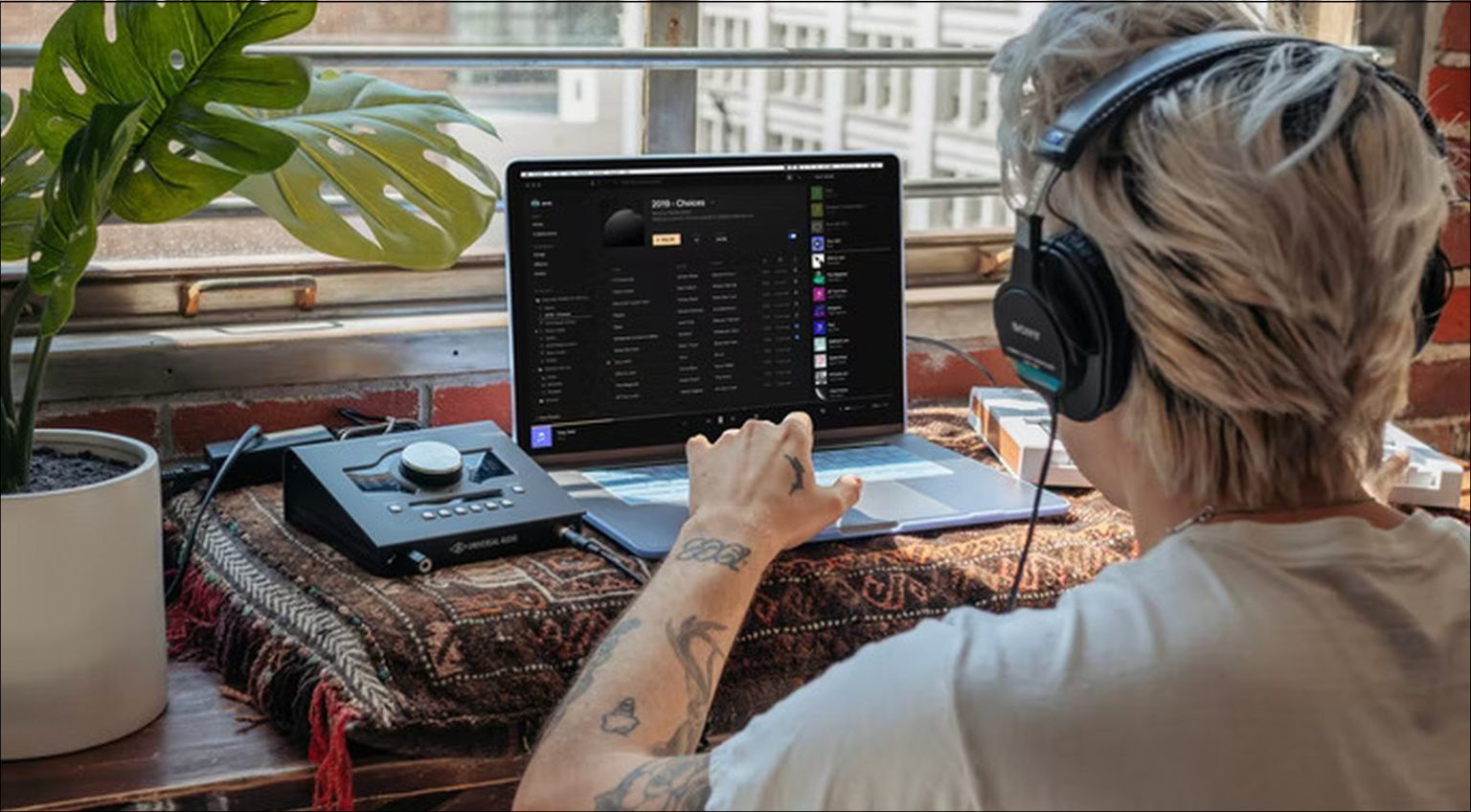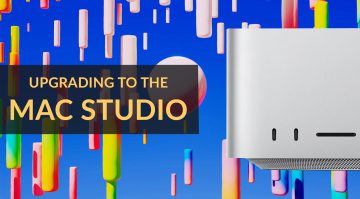Do you really need an M1 Ultra Mac Studio for music?
The verdict is unanimous. The Mac Studio is an absolute beast. When equipped with the ARM M1 Ultra processor, it’s simply in a league of its own. Most reviews you’ll find on any respectable blogs and publications out there have found it to be simply the fastest Mac ever launched. The question remains though: Do you really need to spend four thousand dollars to have a decent studio system?
What do reviews say about the Mac Studio?
Some of the most renowned tech blogs and media outlets have showered the new Mac Studio with praise. “The performance is impressive.” (Oliver Nickel, Golem). “Freakin’ Fast” (Monica Chin, The Verge). “Apple finally has a Mac desktop that rivals PC workstations in the $5,000 range.” (D. Hardawar, Engadget) – these are straight from the horse’s mouth. The trade press too is amazed at the speed of video rendering, image processing, and impressive connectivity options.
You are currently viewing a placeholder content from YouTube. To access the actual content, click the button below. Please note that doing so will share data with third-party providers.
The Mac Studio has also made a good impression on YouTubers like Mary Spender. With the capability to export 30 GB of 4K ProRes video in only 24 seconds, it’s not surprising. The close to silent fan system means you can position microphones close by, without the risk of noise on recordings. Opening pro apps like DAW systems or calling up your projects happens almost instantly. In addition, Spender found the energy efficiency of the Mac Studio to be considerable. When compared to an equivalent desktop PC, energy savings were around a thousand kilowatt-hours per year!
M1 Ultra Mac Studio: How Ultra is it?
There are however a few things that annoy us slightly. At Apple’s Peek Performance event, the Mac Studio’s GPU was compared to Nvidia’s flagship RTX 3090. As it turns out, the first benchmarks have discovered this is not comparable and a discrete GPU is still far more powerful. To make matters worse, there is a distinct lack of the upgradability and modularity that we are used to. Everything is installed firmly onto the board, which is a steady move away from the Mac Pro into the consumer realm. The limitation on RAM and SSD size is also rather underwhelming.
- The CPU performance comparison. · Source: Geekbench
- M1 Ultra is outperformed by NVidia. · Source: Geekbench
The new Studio Display received mostly mixed reviews, while some were unconvinced, to say the least. Apart from the astronomical price tag, there were several aspects that simply didn’t cut it. The six-speaker system did not give you a particularly accurate image of Apple’s Spatial Audio format. On top of that, the selection of stands is factory configured and cannot be altered after the fact – which sucks, frankly. Meanwhile, the built-in webcam is also subpar in the quality department, but at least Apple has promised to fix this with a software update.
Does the Mac Studio make sense for home producers?
The initial hype wave of the Mac Studio washed over us all, with impressive promises of performance. Once you take a look at the reviews and benchmarks, you’re faced with the truth. This is a semi-pro desktop at best. Like so much tech aimed at the content creation market, it offers Swiss-Army knife solutions to a very impressionable audience. For professional studios looking to upgrade to an Apple silicon workstation, the Mac Studio just isn’t what we’ve been waiting for. Without upgradability, it simply isn’t a sustainable and future-proof tool. So many are likely to wait for the new Mac Pro.
On the other end of the market, Apple may have priced the Mac Studio just out of reach of home studio users. This is more than a slight oversight, as home producers dominate the industry worldwide in terms of the amount of music released and the sales of compact audio interfaces, USB microphones, and plug-ins.
Does this mean we’ll see a MacBook Studio?
Bedroom producers are responsible for a large number of great, commercially successful songs, albums and film scores. So as far as the M1 Ultra is concerned, there are currently few scenarios where it would struggle. This includes larger DAW projects with over seventy tracks. Modern producers mostly work with software instruments, effects plug-ins, samples, and loops. So it’s only more CPU-heavy plug-ins like Arturia Pigments, Spectrasonics Omnisphere, or more intensive NI Kontakt instruments that require more power, especially when using multiple instances.
Apple certainly demands a pro budget for the M1 Ultra Mac Studio. However, so many of the connectivity formats it comes with are out of date and don’t meet pro specifications. In the future, we look hopefully at mobile products innovating with the increasing processing power offered by the new CPUs. Will we ever see a MacBook Studio with an integrated audio interface? How about an iPad Studio with zero latency MIDI triggers. Even an “AirPods Studio” with low latency like the AIAIAI TMA-2 would be useful to mobile producers of the current generation.
More about Apple and the Mac Studio:
Videos:
You are currently viewing a placeholder content from YouTube. To access the actual content, click the button below. Please note that doing so will share data with third-party providers.
You are currently viewing a placeholder content from YouTube. To access the actual content, click the button below. Please note that doing so will share data with third-party providers.
Originally published on Gearnews.de by Julian.
17 responses to “Do you really need an M1 Ultra Mac Studio for music?”
 3,9 / 5,0 |
3,9 / 5,0 | 











No
I’m sure it’s great. And I’m probably jealous.
But I can still make viable tracks on my 10 year old Dell Latitude E6330, with Ableton 9. Not wanting to shamelessly plug, but every track under my username you see here on YouTube was done using this old £80 laptop. I do actually now use a more powerful desktop PC but haven’t put anything up on YouTube that I’ve produced on it yet. So even crappy old laptops are absolutely still music-making power houses.
I agree. I’m on a 6th gen i3 Dell using Reaper and it just plugs along (Addictive drums, VSTi synths, lots of plugs including a convo reverb, etc). I remember way back when the tech was still catching up however once it hit a certain level, the tech seemed to exceed what the audio needed. Now video, different animal. I’m shocked at how much I get done on such an old i3-based workstation.
A few problems with this article:
1. Nowhere do you really address the question in the title, the M1 Ultra chip’s specific suitability for pro audio work. The answer is… 20 cores is overkill for most, except those who rely heavily on virtual instruments. Single core performance is effectively identical for all M1 variants, so for tracking with native plugins, it has no special advantage.
2. Pro audio professionals have little interest in GPU comparisons.
3. Limitations on RAM and SSD size? 128GB and 8TB is too limited? Those upgrades are hella expensive, no doubt, but does anybody in pro audio need that much RAM? Also, I have too many samples and they only take up 5TB.
4. The majority of studios (of any size) don’t have a need for PCI expansion. And those who do have abundant options for external thunderbolt enclosures for PCI cards.
5. Connectivity options out of date? Are you aware of any other OEM using Thunderbolt 4? It’s as cutting edge as it comes at present. “Doesn’t meet pro specifications?” What planet are you living on??? The Mac Studio can connect to any modern audio interface, including by PCIe, as mentioned earlier. Seriously, what are you on about?
This is, hands down, the most sloppy and biased article on the Mac Studio I’ve seen anywhere. This deserves a rewrite, or to be taken down.
I COMPLETELY agree with you, sloppy is a nice word for what I was thinking, what a HORRENDOUS article that couldn’t be further from the truth. Shame on Julian!
Yeh it’s a poor article that is seriously lacking any form of objectivity. Sigh…
Thank you! The specs on these machines are more than enough for most (if not all) music pros out there. Speaking as one myself 😉 Looking forward to buying one which will replace my 2012 Mac Pro. Hopefully the author of this article sees the error in their thinking.
Funny how it took Apple to make a powerful computer for everyone to start saying they dont need a herendous amount of power. For years, everyone wanted a powerful machine for gaming, processing, 3d and video applications, etc. Apple says “we got it now”, everyone “i dont need all that”. I think its more of an apple bias than the power. Affordability is also an issue but lets not act like we all dont want super powerful computers if you could afford it. My M1 max 16in macbook is great, the fans have never turned on and i use the same programs that I run on my work mac pro tower which is always blowing the fans when I run after effects.
Provocative. No, audio work does not need the Apple silicon with the additional GPUs. But Apple is very crafty in how they spec machines, tier them and price them. The M1 Mac Mini would have been enough for most audio applications for the next 10 years had they allowed it to ship with adequate RAM and storage. But there was no way they were going to do that in its price range.
My M1 Mac Mini works perfectly for music and I’ve never come close to stressing the machine even when throwing everything I have at it.
Honestly, I’d recommend getting a MacBook Air and hooking it up to an external monitor when at home. The new tech is great, but it’s becoming overkill for audio.
“However, so many of the connectivity formats it comes with are out of date and don’t meet pro specifications.” Can you expand on that comment?
Yeah… 6 thunderbolts + “legacy” ports for convenience. It seems pretty future proof to me
Yes, it’s fast but if your not triggering songs or background tracks for a stage gig it’s a convenience. I’d buy a Mac pro desktop for $6400 seeing most music production doesn’t need to be done at a coffee shop. I’d only buy a Mac for UAD’s Luna. Other than that plugins bundles like UAD Ultimate will still cost $4k not to mention the A/D interface.
Used to be Apple always kept a little off the table for next generation to spur repeat sales. But it seems like Apple has made these CPU’s so good, it begs whether these Mac’s have broken the need for frequent upgrades? The Max and the Ultra seem to have plenty of excess performance to satisfy for years to come.
The First M1 Generation is fast enough for Music Production, if you ask me. Got an M1 Mac Mini first gen and even with large projects I never managed to push it to more than 40% CPU Load in Bitwig Studio or Ableton Live.
Stefan Wyeth is obviously throwing some serious BS here.
Thunderbolt 4 is LITERALLY future proof, thats the whole concept. Are you not aware how thunderbolt functions? It is literally a direct connection to the CPU, so the port can act like any port people want it to be. Current ports and future ones.
Also, hell no. I dont ever want Apple to deliver a sytem with high-end AD/DA. Professionals don’t want that. They are never going to match my Crane Song and Prism converters, period.
The processing power for the pro studio with the M1 Pro, Max and Ultra is beyond what most professionals need. Because most pro studios run a lot of their audio through hardware and not tons of plugins. What they do require is a solid system you can turn on in the morning, do your work and go home. Thats what Apple delivers.
On another note, the 8TB option is more than enough. Especially since most pro studios don’t store work locally anyway, but on their secure network.
So yes, the Mac Studio is suitable for pro’s. Is Stefan Wyeth insightful enough to have wrote this article? Probably not.
The author, and many punters, have completely missed the point I think.
Vastly increased computing power is indeed unnecessary for continuing the status quo, but that ignores completely any future audio technology that can’t run adequately on current technology, and also ignores any performance-related compromises currently being made by audio developers.
Most people won’t be aware of this because they’re not exposed to it – the former is a kind of chicken and egg situation.
There are many areas of audio technology that will be greatly enhanced by such performance increases – in particular in the area of machine learning and model inference, multi-dimensional convolution, etc.
The average studio might not “need” this power now but they will in the future when they realise what it is capable of doing, and once the products that can utilise it have been developed.
You are currently viewing a placeholder content from Facebook. To access the actual content, click the button below. Please note that doing so will share data with third-party providers.
More InformationYou are currently viewing a placeholder content from Instagram. To access the actual content, click the button below. Please note that doing so will share data with third-party providers.
More InformationYou are currently viewing a placeholder content from X. To access the actual content, click the button below. Please note that doing so will share data with third-party providers.
More Information